12 October 2014
The burning of Long Kesh
15 October 1974
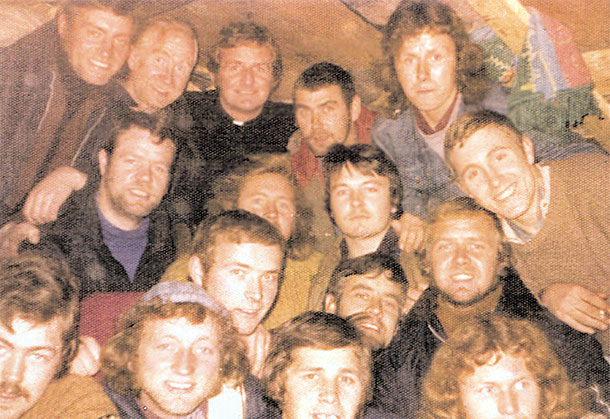
• Pictured in Cage 18 in a makeshift hut after the fire are (top row left to right) Hugh O’Hara, Paddy Mulvenna, Fr Martin Kelly (in the prison to say Mass), Leo Morgan, Brendan ‘Ruby’ Davison; (second row) Manuel Duffy, Peter McAuley, Seán McLoughlin and
Helicopters flew overhead the whole night, harassing the republicans below with hundreds of dropped canisters of CR gas. The whole place was saturated with fire, smoke and gas.
15 OCTOBER marks the 40th anniversary of the burning of Long Kesh camp in 1974 by republican POWs in protest at conditions and ill-treatment. In an article originally published in the November 1994 issue of Captive Voice, a magazine produced by republican POWs, former prisoner JOE DOHERTY, from north Belfast, recalls that historic act of resistance by republicans among the 1,500 prisoners and internees.
WE CANNOT reflect on the 1974 burning of Long Kesh without first understanding the circumstances and conditions of the camp, its historic origins as a prison camp — first for internees in 1971 and later on for political status prisoners (Special Category) — and the overall political situation both inside and outside the prison.
Long Kesh encapsulated the historical prison conflict from the early internment days, the political status phase, and to the H-Block Hunger Strikes of the early 1980s. Britain's renaming of Long Kesh as “The Maze” served to show their embarrassment internationally. To nationalists, Long Kesh represents the endurance, struggle and spirit of republicanism over several generations.
Long Kesh was once a Royal Air Force airfield. Twelve miles south of Belfast, in the post-World War 2 days, teenagers flocked to its dance hall. British policy-makers soon turned the disused airfields and music halls into what reporters would later call a WW2 POW-style prison camp: tin hunts, barbed wire, watch-towers, guard dogs. In 1971, Stormont Premier Brian Faulkner and British Army chiefs soon filled the secretly-constructed corrugated tin huts with hundreds of Irish nationalists — the victims of internment without trial.
Meanwhile, in Belfast's Crumlin Road Prison, republicans were reaping victory from their 1972 hunger strikes for political status. Soon, hundreds of political prisoners convicted through the special courts were being moved to five cages (compounds) at Long Kesh Camp adjacent to the internees’ camp.
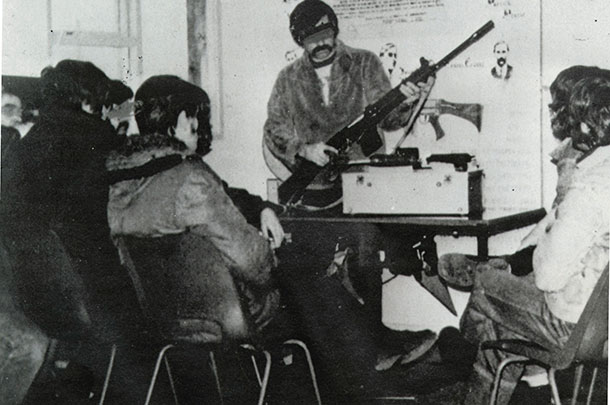
Command structures
The republican cages were soon structured along military lines, each cage representing a battalion or company and with a camp battalion staff to direct camp policy. Republicans organised communication lines, escape committees, military training, political lectures and debates and instilled military discipline across the camp. While each cage/company staff was in direct contact with the local guard unit, the camp staff dealt directly with the head of the British prison regime, reviewing and confronting the regime on camp conditions.
From its earliest days, Long Kesh was deemed uninhabitable for human beings. International human rights organisations such as the Red Cross protested at the conditions. Even an agricultural report deemed the same huts unfit for farm stock. The huts were damp, underheated, rodent-infested, insect-ridden and grossly overcrowded. Food was becoming a critical issue and was deemed cold and undernourishing. The system of food supply was archaic and inadequate for the number of men and the huge layout of the camp. There was literally no laundry facility in the cages.
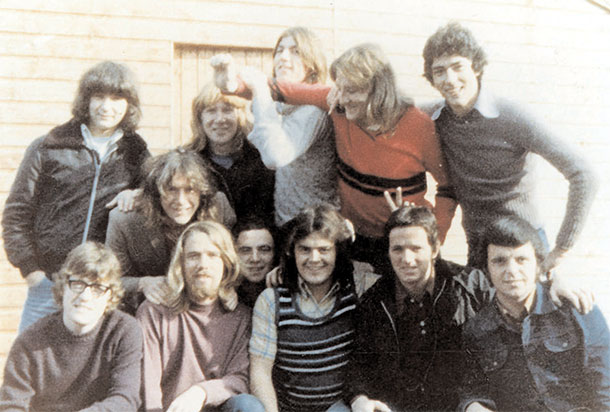
• Pictured in Cage 17 before the fire are (top row, left to right) Martin Walker, Mickey O’Donnell, Johnser Ward, Bobby Sands and Seanna ‘Sid’ Walsh; (crouching left to right) Jim Gibney, Bobby Craig; (bottom row right to left) Paddy Donelly, Gerald Rooney, Dickie O’Neill, Danny Devenny and Tomboy Loudon
Demands, protests and hunger
Soon the republican camp command, along with the camp staff of the internment phase of the camp, were pressing the prison regime for fundamental changes. Even the small number of loyalists (held in separate cages) joined republicans in a campaign to force change.
The republican camp command handed over a 20-point condition paper to the regime, which included the issues of compassionate parole, British Army searches in the internment phase, visiting, the general structural improvements in the huts and the issue of prison food. The prison regime were negative in their approach.
After months of failed dialogue, republicans were forced into passive action. By mid-1974, bedding was thrown over the wire fences. The prison food containers soon followed. The regime reacted by stopping all incoming parcels. This forced republicans down to four rounds of bread per day as bread was the only food accepted.
After months of semi-starvation, republicans were preparing for direct physical confrontation. All personal property was sent out to families as the camp braced itself for the pending threat of riots and destruction. Each republican company area prepared riot-style squads and medic teams, drilling in ‘Red Alert’ exercises, assembling in the yards in military formation as the whole battalion made ready to move at any one signal.
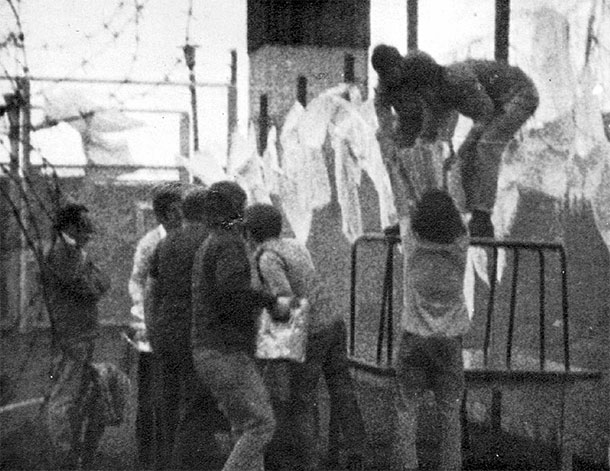
The spark
The regime did eventually respond to some of the demands, which enabled the camp to come off the protest. But there was a continued tense relationship between the republicans and the prison regime. Eventually this came to head in October 1974. Cage 13 was the spark that lit the fire, literally speaking. A local incident between the republican cage commander and the local guard staff drew fists and batons alike. A mini-scuffle erupted. For reasons beyond imagination, the prison guards evacuated the camp and handed over control of the camp to the British Army, who took control of phase perimeters.
At first the situation was confusing as each cage sought information from across the camp. No guards were at their posts and the movements of troops could be heard in the distance. This was in violation of the agreement banning British Army incursions into the camp.
The semaphore flag system was in full swing as both internment and political status phases of the camp sought information and direction. Individual cages took evasive action and sent men over the wire of their cages to scout around. They reported back that all guards were gone and that the British Army had control of the internal post phones.
The line was drawn and the camp moved into action. Smoke and fire were seen far off in Cage 13. Soon the Red Alert alarms and signals were sent out across the camp. The riot drills we had so diligently practiced for months were now coming into play as each man moved into his position, rushing to put on prepared riot gear and ready-made shields and riot sticks. In hindsight, it is difficult to really understand the reasons for the order. But the war cry went up: “Burn the camp!”
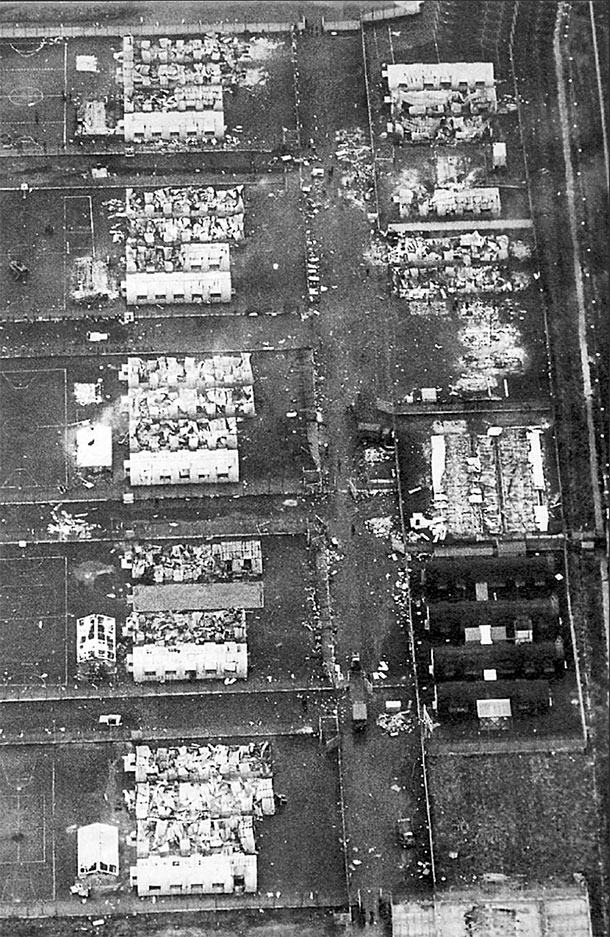
Camp ablaze
The darkness of the night soon turned a bright amber red as hundreds of republicans burned every hut and structure they could lay their hands on. The fires could be seen as far afield as Belfast itself (nine miles distant). No sooner was the place alight than each particular company command was given orders to move into defensive positions around the camp.
The battalion command took up control of the two football pitches situated in the centre of the camp. Soon, both internees and political status prisoners met up on the pitches. Some of the internee cages were trapped down camp and were cut off. But the remaining dozen companies of men moved into assigned positions. Republicans awaited orders.
As the camp burned around us, the republican command waited on the British Army to make their move. There was no sign of any movement from the British side. The British Army chiefs realised that it would be futile to enter with such a formidably organised (however crudely equipped) republican force in wait. They left it until dawn to make their move as thousands of troops were flown into the area for the encounter.
Meanwhile, helicopters flew overhead the whole night, harassing the republicans below with hundreds of dropped canisters of CR gas. The whole place was saturated with fire, smoke and gas.
Republicans waited for dawn. It must be noted that CR gas was never used or tested before and this was subsequently covered up by the British. A stream of Ministry of Defence medical teams were sent in to do tests on men the following year — nothing has ever been published.
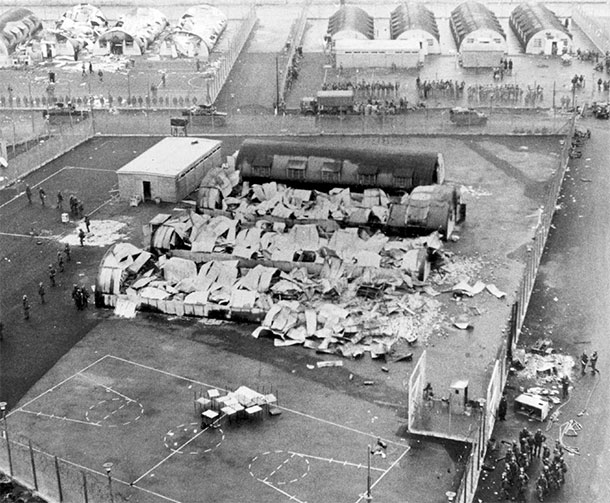
Attack at dawn
As the fires smouldered and the night faded, the dawn air was cold and dew lay like a damp blanket over the camp. The excited spirit that was so prevalent during the night of fires and war cries was fading too.
The stark reality was settling in as hundreds of weary republicans were called into position. Formations were set up in relation to the best defence of the pitches. Soon the misty, hidden winter sun had risen and all were on their feet.
The British Army were approached for negotiations. When we captured the prison hospital many non-republicans were taken captive. An offer was made to hand them over. The British Army would not negotiate. They were set on capturing the camp.
The choppers flying in formation over the camp indicated the British Army's first move. CR gas canisters were fired from fixed positions across the perimeter as, out of the gassed mist, came thousands of heavily-geared troops, steel helmets, visors, gas-masks, riot sticks and rubber bullet guns. It was an impressive khaki wall of force. It was a starkly cold sight. They were organised and moved at a determined centurion pace.
All hell broke loose as the choppers searched out targets on the ground and the troops inched forward, firing rubber bullets and gas. A Saracen armoured troop carrier roamed the place, knocking down all fortified barricades.
The battle lasted most of the early morning.
Many small pockets of republicans were cut off and captured by snatch squads. British Army personnel, too, were captured. Gas continued and rubber bullets penetrated the makeshift shields, plunging into heads and bodies.
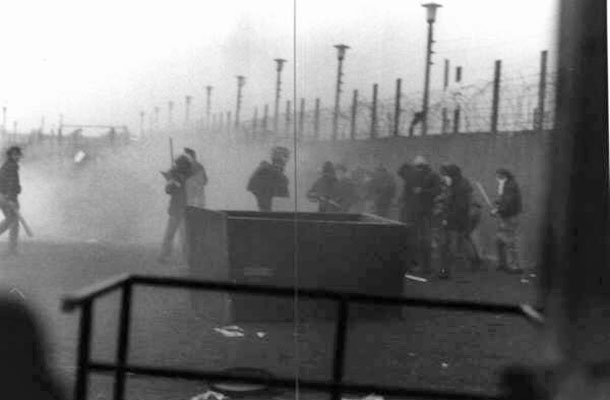
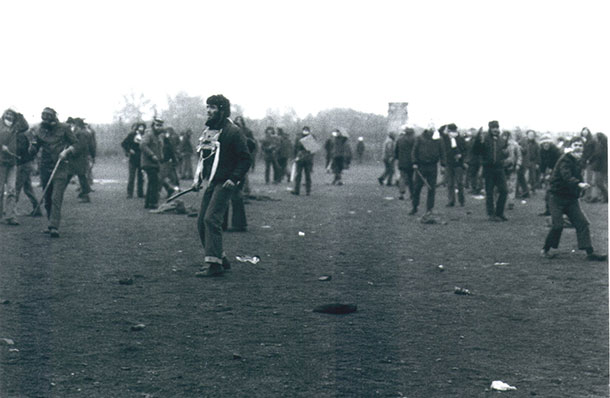 Last stand
Last stand
Republicans were forced back, foot by foot, under the massive weight of superior numbers. The British cut off the run-back to the top end of the camp, a prepared escape route out of the pitches. While several hundred men escaped, the remaining 300 were trapped. Huddled into the corner of the pitch, subdued, the mountain of crushed bodies awaited the final assault.
There was one last rush of troops, firing every gas and rubber bullet gun they could muster. The air was so thick with gas that no one could see any possible escape. Batons were thumped across any head that could be seen and rubber bullet guns were fired into selected faces. Blood and vomit were everywhere. Coughed screams were ignored about the victorious and revenge-filled screams of British troops. Several men were seriously injured in this attack, sustaining broken limbs and the loss of eyes.
The bloodletting over, the remaining conscious republicans were dragged and beaten to the surrounding wire, each individually beaten and spreadeagled against the wire. And there they stood spreadeagled for the next eight hours; those who dared to fall were again beaten.
Meanwhile, the top end of the camp had fallen. The whole camp was now secured and in the control of the British Army. Where are they going to put us, we wondered? Nothing stood in the cages, not a stick or brick.
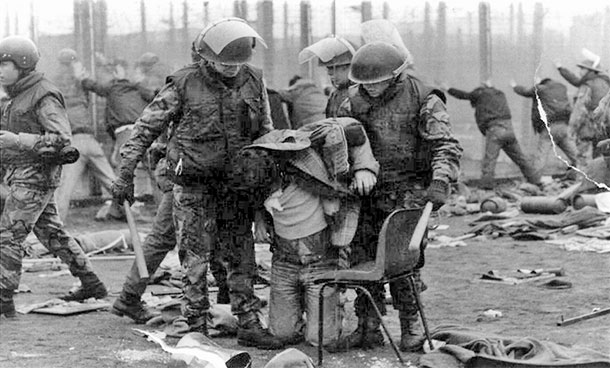
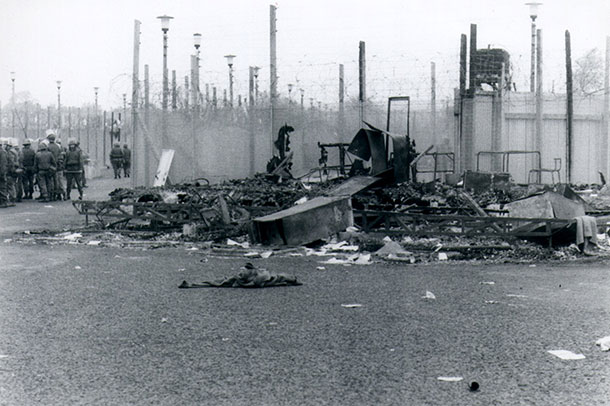
After routine beating sessions and forced marches back into the cages, the British suddenly pulled out, leaving republicans to fend for themselves. Although injured, cold and hungry, the republicans pulled together, quickly organising a system of shelter for the night under the rain. Morale was high. The following day, squads of men set about tearing at what was left of the mass of rubble for any wood or tin sheeting construct a shantytown. A manhole cover was pulled up to create a crude toilet. Sanitation had to be secure, no matter how bad the conditions were.
This was to be home for the following months. Amongst the rubble, republicans organised a system for bathing and sharing whatever water they could procure. The badly-injured among the men were confined to a special makeshift hut. Republican structures maintained a continuing mode of disciplined resistance and unity.
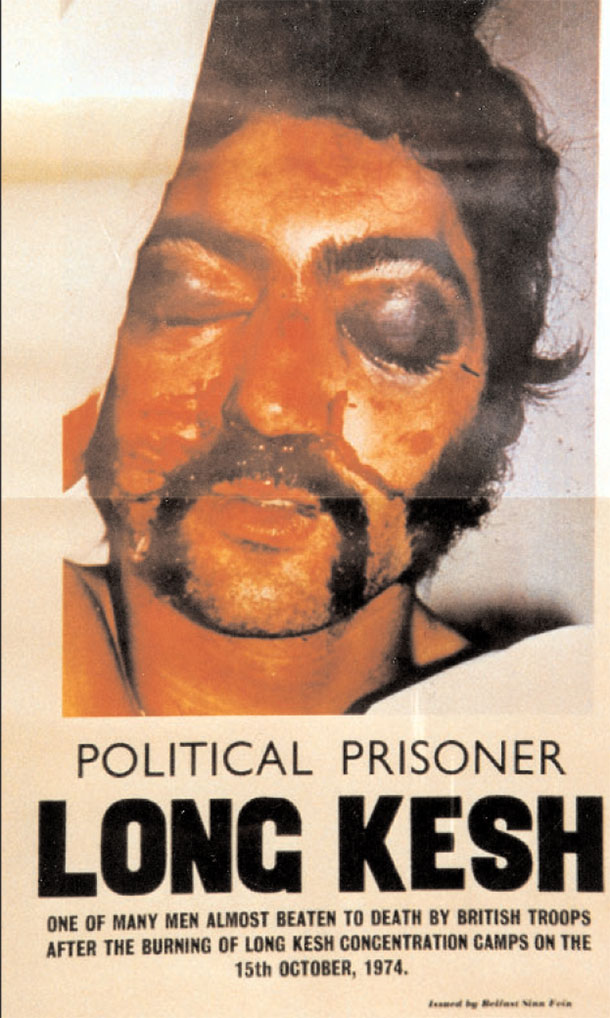
• Poster showing the savagery of the beatings by the British Army in Long Kesh
• Postscript: During that shantytown era, internees in Cage 5, using fallen rubble as a cover, set to tunnel under the main perimeter. On the night of 6 November 1974, republican POWs made their way out under the cover of darkness. Alerted, the British Army post opened up on the escaping men. While three escaped, Volunteer Hugh Coney, from Coalisland, County Tyrone, was shot dead.
While Long Kesh burned, other republican commands in Magilligan, Armagh and Crumlin Road prisons rose to the occasion. They tell their own similar stories.
By Christmas 1974, republicans were relocated in a new phase. A new campaign was under way to improve conditions.
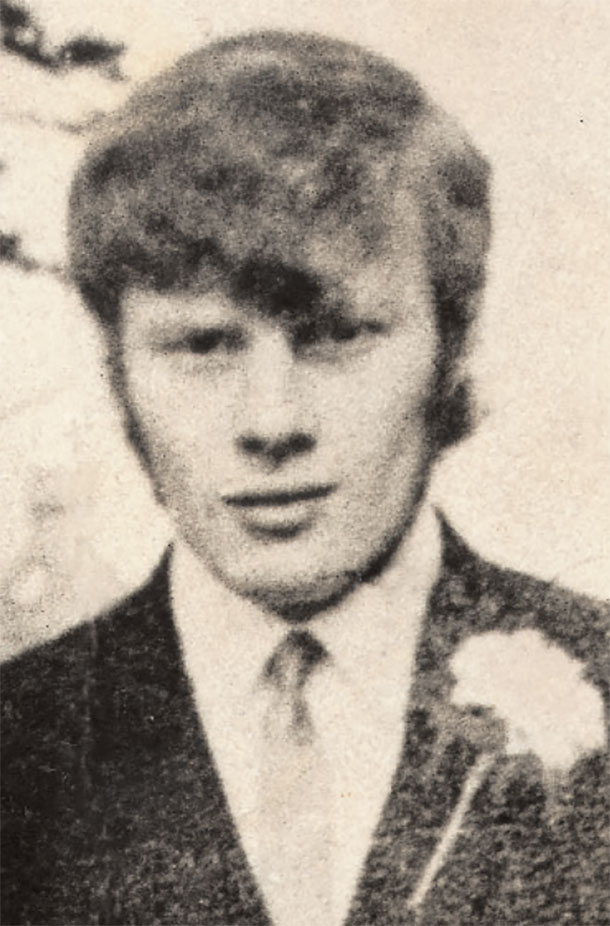
• Volunteer Hugh Coney
The following year, while the camp settled into normality and as internment was being phased out, a new construction was under way beyond the bottom perimeter of the camp. This was not the accustomed corrugated tin sheets but a mass of prefab concrete sections edging outwards, taking a strange ‘H’ shape.
Yet again, there entered another phase of republican POW resistance, fought by many of those who took part in the night of 15 October, the night Long Kesh burned for the world to see. Again, the resistance of republicans would prevail.
Follow us on Facebook
An Phoblacht on Twitter
Uncomfortable Conversations

An initiative for dialogue
for reconciliation
— — — — — — —
Contributions from key figures in the churches, academia and wider civic society as well as senior republican figures




